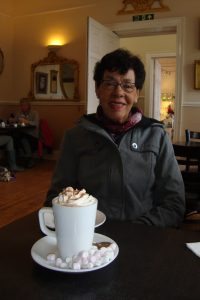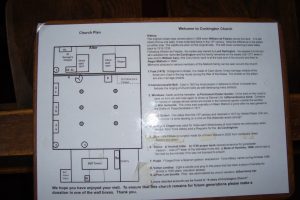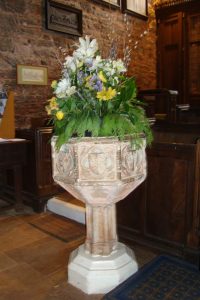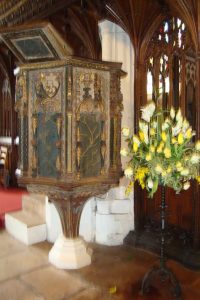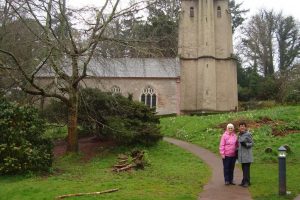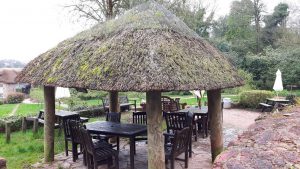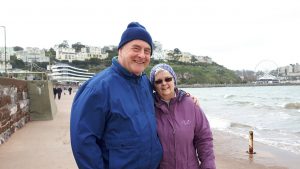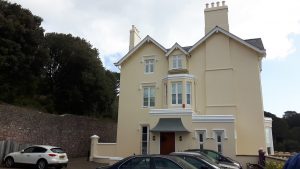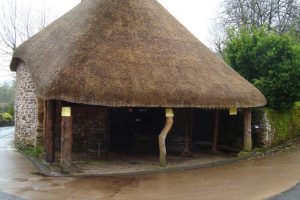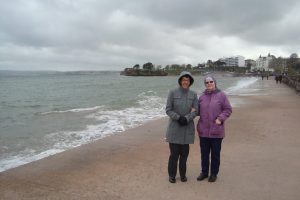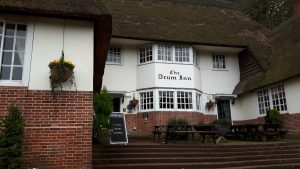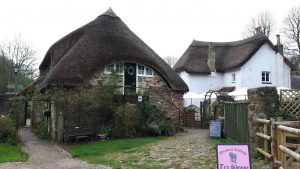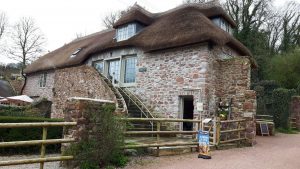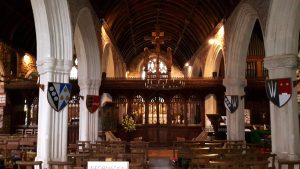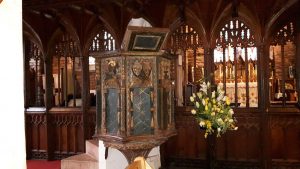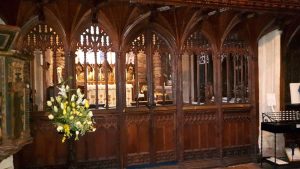Day 7
It was an overcast day. We ate a hearty breakfast, but undeterred by the rain, and cool temperatures we set out for Cockington Village. I had shared with David and Hilary, how I would love to visit the Drum Inn where I had been taken as a child for an afternoon tea of hot buttered scones, strawberries, and clotted cream. We drove into the village, parked, and made our way through pathways flanked by green lawns, a cricket pitch, and clusters of daffodils. A chorus of birds serenaded us all the way. We planned to attend the morning service at St George and St Mary’s Parish Church. A notice was pinned to the door saying the service was cancelled. But we were able to enter the ancient church. Stooping a little, we pushed open the heavy wooden door, and immediately the smell of centuries hit our nostrils; ten centuries to be exact. The church was celebrating its thousand years of existence.
There were vases of flowers, on the ledges, straw bonnets hanging on the walls, and flagstones under our feet, some with a faded engraving of people buried there. On every seat was a hassock, big enough for a pair of knees to kneel in prayer. The hassocks were made by the Cockington Ladies Sewing Group. Each one had a scripture embroidered on it.
It is clear to see looking at the map of England, that would be invaders could approach the Island from many different directions. In 1588 the Spanish Armada entered the coastal waters of Devon, but English tenacity and stormy weather, along with other disturbing situations favoured the English. And as the Armada retreated, some of its ships were lost in a storm. Booty was washed ashore and among it an ornate pulpit with carved figures.
Today that pulpit stands in the little church in Cockington.
Of note is the fact that Oliver Cromwell, who was Lord Protectorate from 1653 to 1658, was dictatorial in how people should worship, choosing the puritan approach. Church bells, vestments worn by the priests, and the like, were strictly forbidden. I tell you this to relate that in the church in Cockington, there is a huge bell made by the parishioners in defiance of Cromwell’s harsh ruling.
After our church visit, we went to the village green building, which had once been the Manor House and indulged in hot drinks and Victoria sponge cake!
Thatched cottages are prominent in English villages, and Cockington has its share. They are so pretty with their walled gardens bursting with flora. I did learn later that everyone who has a thatched roof in England is not allowed to change it to tile. Owners are required by law to have their thatch replaced every 25 years. This is interesting from two perspectives, maybe three. It keeps people skilled in the ancient craft of thatching, lends old-worldly charm in many villages, and delights tourists with the quaintness of it all. Back at the hotel, we had dinner, and afterward, I joined David and Hilary in their room to watch Songs of Praise on the BBC. It was good to learn that many churches in England engage in missions at home and overseas.

